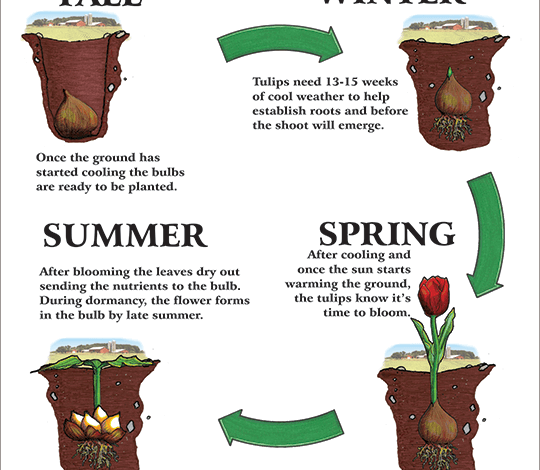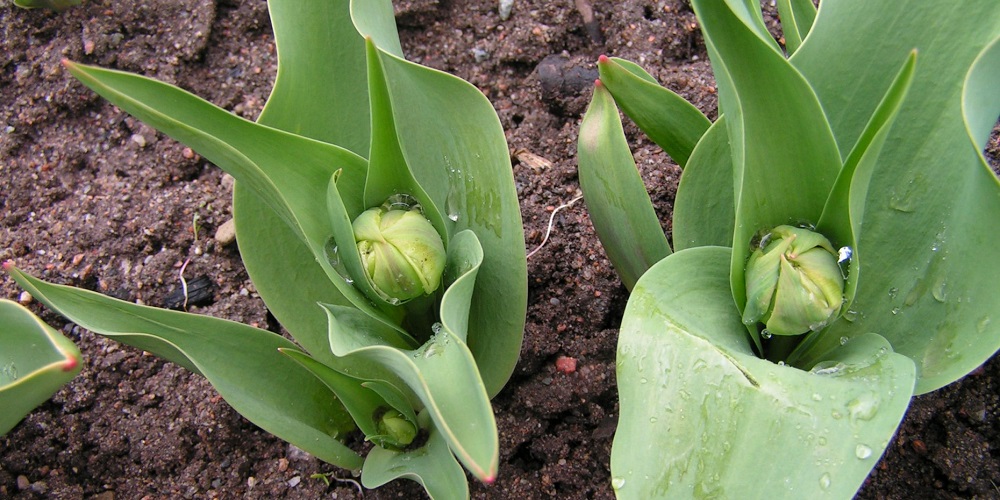How to care for and grow tulips?

Tulips are imposing flowers with a great capacity for adaptation, which is why they can be grown not only in large fields but also in home gardens and pots. To maintain and protect the beauty of their flowering, as well as to see them grow and develop healthy, these plants need some basic care.
Tulips are bulbous flowers that belong to the tulipa genus, which offers hundreds of species that differ in size, shape, and color. It is one of the most popular, appreciated and commercialized flowers in the world , surpassed in sales only by roses.
What you should know about its cultivation
One of the objectives of planting tulips is directly related to the sale of dry bulbs in the market or to produce them as cut flowers. However, it is also possible to grow tulips at home.
To start the cultivation of tulips at home, the bulbs must first be purchased; its size can give us an idea of how big its flowers could become. These bulbs can be easily obtained in specialized centers or flower shops.
The best time to plant tulips is early fall; since it is important not to expose the bulbs to direct sunlight or low temperatures. When they are planted on this date, their flowering is determined for spring and when spring arrives, the average life of their flowers is three weeks.
How to plant tulips? The bulbs should always be planted with the apex pointing upwards and at a depth of 25 cm, if the soil is sandy. In the cases of botanical bulbs, 10 cm deep could be enough. In addition, if the cultivation is direct on the ground, it is recommended to leave a distance of 20 cm between the plants.
In the case of planting tulips in pots, it is advisable to choose terracotta containers with good drainage, as it favors the respiration of the plant and they should also have a minimum diameter of 15 cm.
A layer of gravel and clay balls is placed at the bottom of the pot. Then put soil and fertilizer until half full. Next, the bulbs are planted leaving 2 or 3 cm apart, they are covered with substrate, the earth is pressed down and they are watered.
On the other hand, it is also possible to plant tulips in water. It is a technique where the plant develops and grows only with the moisture of its roots. To do this, a bowl with water at the bottom is used, marbles or pebbles are placed and the bulbs on them.

Your main care
For tulips to thrive, they need to be provided with well-drained soil rich in organic matter. Likewise, achieving a perfect flowering requires shade and that they are protected from the sun’s rays during the growth period.
Another of the main cares for tulips is to provide them with moist soil; In this sense, the use of watering cans (in this link you will find several products to analyze) could cover this requirement, taking care at the time of irrigation not to flood the roots. Likewise, it should be considered that in dry climates it is necessary to water more frequently.
It is also essential to avoid putting fertilizers or manure after the bulb has been planted; for this, the land must be prepared in advance. On the other hand, the plant must be protected from cold air currents. In addition, the harvest of the flowers must be careful, always cutting them at 45 degree angles.
Morphology
Tulips are solitary flowers that grow single on the stem; they are easily recognized by their bulbous appearance, inside which they have a hairy tunic. Its petals remain raised, are rounded or conical, and are generally inward.
The tulips in spring produce a great chromatic diversity, which makes the extensive crops are called rainbow fields . This is possible thanks to the varied proportion of pigments that colored tulips have; among which are: carotenoids, delphinidin, pelagonidine, cyanidin and others.
With regard to the stem, on very rare occasions it appears branched; it is long, straight and without great variations. It measures approximately between 20 and 30 cm, although there are botanical records of species that have reached a height of up to 70 cm.
On the other hand we have its leaves, these present a basal growth; that is, they grow very close to the stem and spaced out. They have a lanceolate shape and are generated by a rigid bulb.

varieties
There are thousands of tulip bulbs that offer a wide range of striking flowers in various colors; so we can find shades that range from the softest to the most intense. Among them stand out the red tulips, yellow tulips, in shades of violet, fuchsia, orange and there is even the variety of white tulip and also nuanced.
Likewise, we have wild or natural tulips and cultivar or hybrid tulips. Similarly, there are species suitable for growing in pots and others that thrive better when planted directly in the ground.
Its origin and trade
Tulips are native to the steppes and mountains of Turkey, where Turkish sultans and courts paid tribute to their unique beauty; so hundreds of these flowers came to decorate the mosques, gardens and green spaces of their palaces.
Today this plant is considered the national flower of Turkey , which is why it adorns many of its avenues and parks. It is also present on its tickets, in the logo of its tourism agency and even became part of the campaign for the candidacy of the 2020 Istanbul Olympics.
However, despite Turkey being the cradle of tulips; in Holland its first producer worldwide. Every spring this flower is the main product exported by the Netherlands, achieving millionaire sales of this plant to different regions of the world.
In the Netherlands it is grown on a large scale , especially from March to May; where extensive fields are filled with the color and beauty of tulips. There are also large crops of this plant in Russia, France, China and Argentina.


![Photo of Margarita Cuttings: [Grafts, Time, Rooting and Planting]](https://www.complete-gardening.com/wp-content/uploads/2022/08/margarita-cuttings-grafts-time-rooting-and-planting-390x220.jpg)
![Photo of Calateas: [Cultivation, Irrigation, Care, Pests and Diseases]](https://www.complete-gardening.com/wp-content/uploads/2022/08/calateas-cultivation-irrigation-care-pests-and-diseases-390x220.jpg)
![Photo of Cabbage Fly (Phorbia brassicae): [Characteristics, Detection, Effects and Treatment]](https://www.complete-gardening.com/wp-content/uploads/2021/06/Que-es-la-mosca-de-la-col-390x220.jpg)